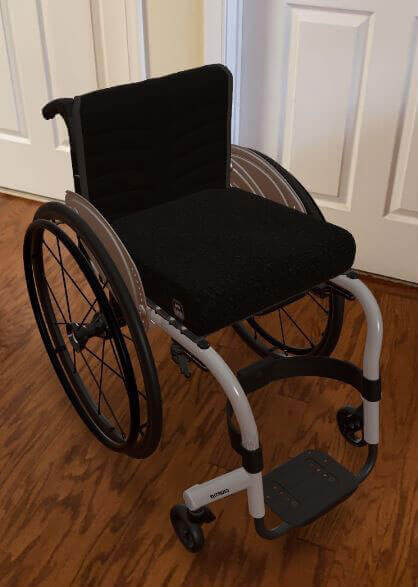sdílet:
Take it offline!
This Education in Motion resource is also available as a printable PDF.
Stažení PDF
Have you ever heard the phrase, "a picture is worth a thousand words?" It is a rather common phrase in the United States that first emerged in the early part of the 20th century. In short, it means a picture can provide a description or tell a story just as well, if not better than, a lot of words.
As someone who considers herself a visual learner and struggles to generate a picture in my mind when something new is described to me, I can absolutely relate to this saying. I cannot tell you the number of clients over the years I have had to give the speech to about how the wheelchair they were seeing at the time of the evaluation in person and/or in the pictures from a brochure is not an exact replica of what they would be receiving. Other times I found myself sitting with a wheeled mobility device provider trying to get on the same page about the angle of the frame bend, but the two of us could not accurately describe what we were thinking to each other. Then on the day of delivery, someone in the room would inevitably say, "That's not how I thought it would look."
Throughout the 20+ years of my career, I have watched how technology has changed the equipment available for clients and how the evaluation process for the equipment is conducted. In fact, we've seen a major shift in the wheelchair provision process in the past year due to the global pandemic. Clients, caregivers, clinicians, and wheelchair providers have all experienced changes in how information is transmitted and care is provided. While it might not be ideal in all situations, it is not uncommon for educational seminars, new product demonstrations, and even some equipment evaluations to take place via a virtual platform. However, the difficulty surrounding visualizing what a wheelchair would look like when configured the way a specific client needs and desires has remained a struggle until recently.
With the launch of the QUICKIE Nitrum ultra lightweight wheelchair in 2020, Sunrise Medical also launched two new digital tools to help overcome the visualization obstacle. The online 3D visualizer allows anyone to configure a Nitrum with the numerous options available. The 3D visualizer provides a "hands-on" approach to truly understanding the options a client needs and desires. Click over to the Nitrum product page to try it out for yourself!
Here are some examples I took while exploring the tool to help me better visualize frame inset and frame angles.

0" inset

2" inset
This tool is invaluable during the evaluation process, because it helps everyone on the team get a better understanding of exactly what a specific feature or option looks like. Not to mention ensuring the client knows how the chair will look from an aesthetics standpoint. In addition, once the team has landed on a specific wheelchair configuration for a client, a PDF of the specifications can be generated and shared with members of the team who were not able to attend the evaluation.

75° frame angle

85° frame angle
The second digital tool allows you to "see" the Nitrum in your own environment with Augmented Reality (AR). Just scan the QR code on the Nitrum webpage with your phone and select one of the configurations to see how the Nitrum will look in any environment.

If over 100 years ago a picture was determined to be worth 1,000 words, I cannot imagine how much digital tools such as these are worth when it comes to improving the services and lives of the clients we encounter each day.